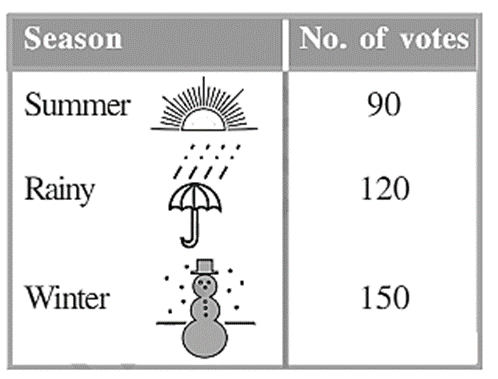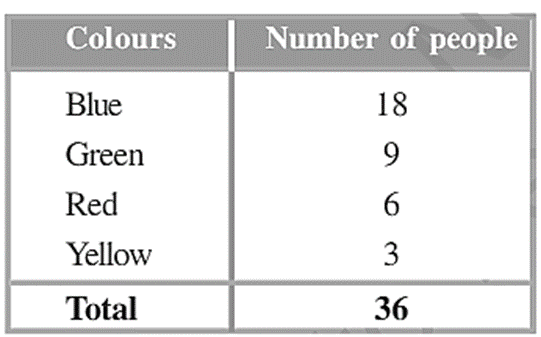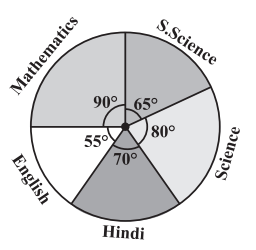QUESTION BANK CLASS 8 SQUARE AND SQUARE ROOTS
the area of a square = side × side (where ‘side’ means ‘the length of
a side’)
Such numbers like 1, 4, 9, 16, 25, ... are known as square numbers.
In general, if a natural number m can be expressed as n² , where n is also a natural
number, then m is a square number.
The numbers 1, 4, 9, 16 ... are square numbers. These numbers are also called perfect
squares.
All these numbers end with 0, 1, 4, 5, 6 or 9 at
units place. None of these end with 2, 3, 7 or 8 at unit’s place.
If a number ends in 0, 1, 4, 5, 6 or 9, then it must be a square
number.
if a number has 1 or 9 in the units place, then it’s square ends in 1.
when a square number ends in 6, the number whose square it is, will
have either 4 or 6 in unit’s place.
in general we can say that there are 2n non perfect square numbers between
the squares of the numbers n and (n + 1).
the sum of first n odd natural numbers is n²
‘If the number is a square number, it has
to be the sum of successive odd numbers starting from 1 .
t if a natural number cannot be
expressed as a sum of successive odd natural numbers
starting with 1, then it is not a perfect square.
For any natural number m > 1, we have (2m)² + (m² – 1)² = (m² + 1)² . So, 2m,
m² – 1 and m² + 1 forms a Pythagorean triplet.
finding the square root is the inverse operation
of squaring.
t there are two integral square roots of a perfect square
number. In this chapter, we shall take up only positive square root of a natural number.
Positive square root of a number is denoted by the symbol.
every square
number can be expressed as a sum of successive odd natural numbers starting from 1.
each prime factor in the prime factorisation of the
square of a number, occurs twice the number of times it occurs in the
prime factorisation of the number itself.
t if a perfect square is of n-digits, then its square root will have n/2 digits if n is even or (n +1)/2 if n is odd.
1. If a natural number m can be expressed as n
2
, where n is also a natural number, then m is a
square number.
2. All square numbers end with 0, 1, 4, 5, 6 or 9 at units place.
3. Square numbers can only have even number of zeros at the end.
4. Square root is the inverse operation of square.
5. There are two integral square roots of a perfect square number.
Positive square root of a number is denoted by the symbol .
For example, 32
= 9 gives 9 3
EXAMPLE:
Find the perfect square numbers between (i) 30 and 40 (ii) 50 and 60
Which of the following numbers would have digit 6 at unit place. (i) 19² (ii) 24² (iii) 26² (iv) 36² (v) 34²
What will be the “one’s digit” in the square of the following numbers?
(i) 1234 (ii) 26387 (iii) 52698 (iv) 99880
(v) 21222 (vi) 9106
1. How many natural numbers lie between 9² and 10² ? Between 11² and 12² ?
2. How many non square numbers lie between the following pairs of numbers
(i) 100² and 101² (ii) 90² and 91² (iii) 1000² and 1001²
The square of which of the following numbers would be an odd number/an even
number? Why?
(i) 727 (ii) 158 (iii) 269 (iv) 1980
2. What will be the number of zeros in the square of the following numbers?
(i) 60 (ii) 400
Find whether each of the following
numbers is a perfect square or not?
(i) 121 (ii) 55 (iii) 81
(iv) 49 (v) 69
Express the following as the sum of two consecutive integers.
(i) 21² (ii) 13² (iii) 11² (iv) 19²
2. Do you think the reverse is also true, i.e., is the sum of any two consecutive positive
integers is perfect square of a number? Give example to support your answer.
Write the square, making use of the above
pattern.
(i) 111111² (ii) 1111111²
Can you find the square of the following
numbers using the above pattern?
(i) 6666667² (ii) 66666667²
Find the square of the following numbers without actual multiplication.
(i) 39 (ii) 42
Find the squares of the following numbers containing 5 in unit’s place.
(i) 15 (ii) 95 (iii) 105 (iv) 205
Write a Pythagorean triplet whose smallest member is 8.
Find a Pythagorean triplet in which one member is 12.
Find the square root of 6400
Is 90 a perfect square?
Is 2352 a perfect square? If not, find the smallest multiple of 2352 which
is a perfect square. Find the square root of the new number.
Find the smallest number by which 9408 must be divided so that the
quotient is a perfect square. Find the square root of the quotient.
Find the smallest square number which is divisible by each of the numbers
6, 9 and 15.
Find the square root of : (i) 729 (ii) 1296
: Find the least number that must be subtracted from 5607 so as to get
a perfect square. Also find the square root of the perfect square.
: Find the greatest 4-digit number which is a perfect square.
Find the least number that must be added to 1300 so as to get a
perfect square. Also find the square root of the perfect square.
Find the square root of 12.25.
Area of a square plot is 2304 m2
. Find the side of the square plot.
There are 2401 students in a school. P.T. teacher wants them to stand
in rows and columns such that the number of rows is equal to the number of columns. Find
the number of rows.
EXERCISE 5.1
1. What will be the unit digit of the squares of the following numbers?
(i) 81 (ii) 272 (iii) 799 (iv) 3853
(v) 1234 (vi) 26387 (vii) 52698 (viii) 99880
(ix) 12796 (x) 55555
2. The following numbers are obviously not perfect squares. Give reason.
(i) 1057 (ii) 23453 (iii) 7928 (iv) 222222
(v) 64000 (vi) 89722 (vii) 222000 (viii) 505050
3. The squares of which of the following would be odd numbers?
(i) 431 (ii) 2826 (iii) 7779 (iv) 82004
4. Observe the following pattern and find the missing digits.
11² = 121
101² = 10201
1001² = 1002001
100001² = 1 ......... 2 ......... 1
10000001² = ...........................
5. Observe the following pattern and supply the missing numbers.
11² = 1 2 1
101² = 1 0 2 0 1
10101² = 102030201
1010101² = ...........................
............ ² = 10203040504030201
6. Using the given pattern, find the missing numbers.
1² + 2² + 2² = 3²
2² + 3² + 6² = 7²
3² + 4² + 12² = 13²
4² + 5²+ _² = 21²
5² + _² + 30² = 31²
6² + 7² + _² = __²
7. Without adding, find the sum.
(i) 1 + 3 + 5 + 7 + 9
(ii) 1 + 3 + 5 + 7 + 9 + 11 + 13 + 15 + 17 +19
(iii) 1 + 3 + 5 + 7 + 9 + 11 + 13 + 15 + 17 + 19 + 21 + 23
8. (i) Express 49 as the sum of 7 odd numbers.
(ii) Express 121 as the sum of 11 odd numbers.
9. How many numbers lie between squares of the following numbers?
(i) 12 and 13
(ii) 25 and 26
(iii) 99 and 100
EXERCISE 5.2
1. Find the square of the following numbers.
(i) 32 (ii) 35 (iii) 86 (iv) 93
(v) 71 (vi) 46
2. Write a Pythagorean triplet whose one member is.
(i) 6 (ii) 14 (iii) 16 (iv) 18
EXERCISE 5.3
1. What could be the possible ‘one’s’ digits of the square root of each of the following numbers? (i) 9801 (ii) 99856 (iii) 998001 (iv) 657666025
2. Without doing any calculation, find the numbers which are surely not perfect squares. (i) 153 (ii) 257 (iii) 408 (iv) 441
3. Find the square roots of 100 and 169 by the method of repeated subtraction.
4. Find the square roots of the following numbers by the Prime Factorisation Method. (i) 729 (ii) 400 (iii) 1764 (iv) 4096 (v) 7744 (vi) 9604 (vii) 5929 (viii) 9216 (ix) 529 (x) 8100
5. For each of the following numbers, find the smallest whole number by which it should be multiplied so as to get a perfect square number. Also find the square root of the square number so obtained. (i) 252 (ii) 180 (iii) 1008 (iv) 2028 (v) 1458 (vi) 768
6. For each of the following numbers, find the smallest whole number by which it should be divided so as to get a perfect square. Also find the square root of the square number so obtained. (i) 252 (ii) 2925 (iii) 396 (iv) 2645 (v) 2800 (vi) 1620
7. The students of Class VIII of a school donated ` 2401 in all, for Prime Minister’s National Relief Fund. Each student donated as many rupees as the number of students in the class. Find the number of students in the class.
8. 2025 plants are to be planted in a garden in such a way that each row contains as many plants as the number of rows. Find the number of rows and the number of plants in each row.
9. Find the smallest square number that is divisible by each of the numbers 4, 9 and 10.
10. Find the smallest square number that is divisible by each of the numbers 8, 15 and 20.
EXERCISE 5.4
1. Find the square root of each of the following numbers by Division method.
(i) 2304 (ii) 4489 (iii) 3481 (iv) 529
(v) 3249 (vi) 1369 (vii) 5776 (viii) 7921
(ix) 576 (x) 1024 (xi) 3136 (xii) 900
2. Find the number of digits in the square root of each of the following numbers (without
any calculation).
(i) 64 (ii) 144 (iii) 4489 (iv) 27225
(v) 390625
3. Find the square root of the following decimal numbers.
(i) 2.56 (ii) 7.29 (iii) 51.84 (iv) 42.25
(v) 31.36
4. Find the least number which must be subtracted from each of the following numbers
so as to get a perfect square. Also find the square root of the perfect square so
obtained.
(i) 402 (ii) 1989 (iii) 3250 (iv) 825
(v) 4000
5. Find the least number which must be added to each of the following numbers so
as to get a perfect square. Also find the square root of the perfect square so
obtained.
(i) 525 (ii) 1750 (iii) 252 (iv) 1825
(v) 6412
6. Find the length of the side of a square whose area is 441 m2
.
7. In a right triangle ABC, ∠B = 90°.
(a) If AB = 6 cm, BC = 8 cm, find AC (b) If AC = 13 cm, BC = 5 cm, find AB
8. A gardener has 1000 plants. He wants to plant these in such a way that the number
of rows and the number of columns remain same. Find the minimum number of
plants he needs more for this.
9. There are 500 children in a school. For a P.T. drill they have to stand in such a
manner that the number of rows is equal to number of columns. How many children
would be left out in this arrangement





